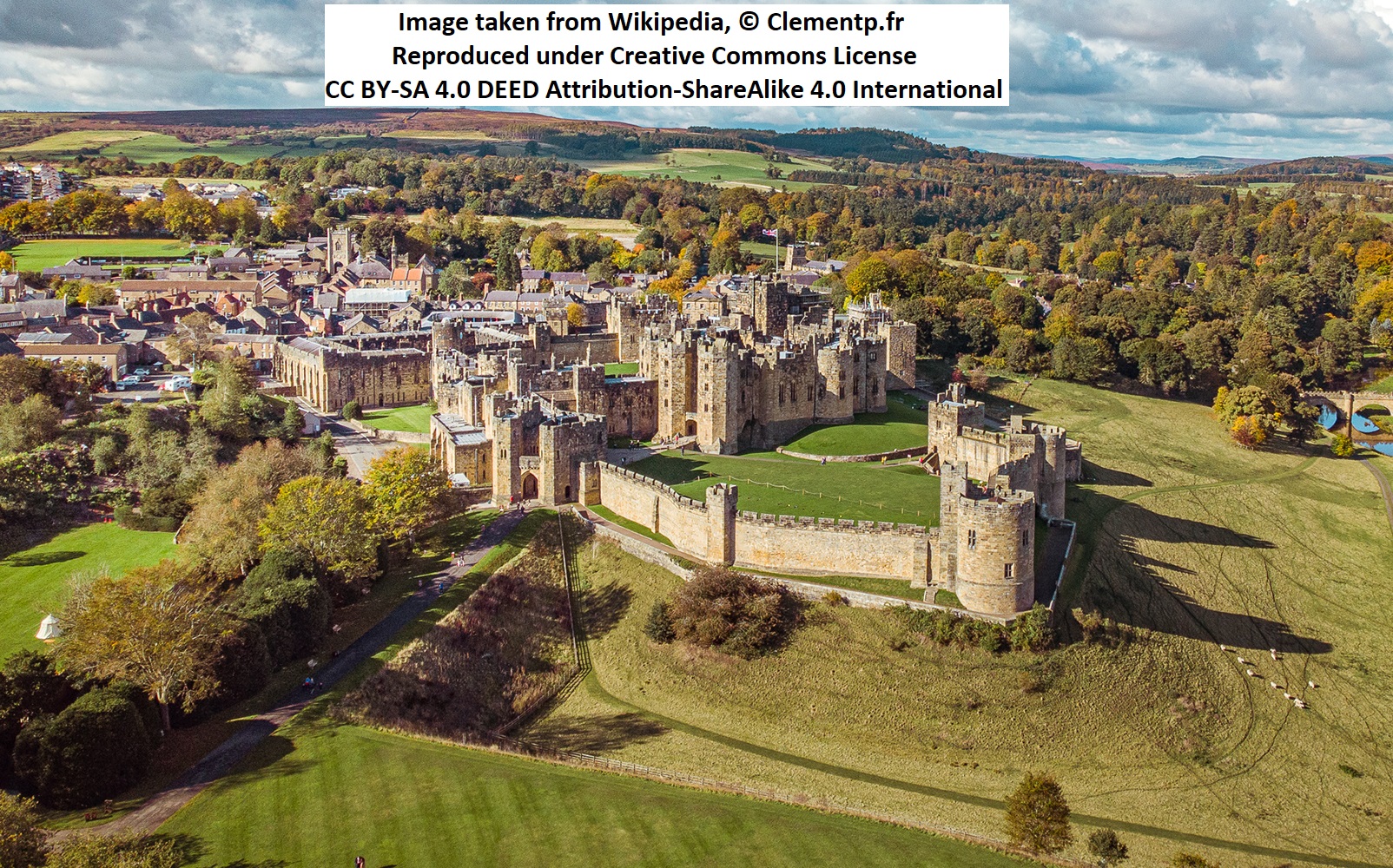Alnwick Castle

Alnwick Castle Details
Alnwick Castle, an impressive castle still occupied by the duke of Northumberland but open as an attraction
- Closest To: Alnwick
- Access: Chargeable Public Access
- Grid Reference: NU187136
Alnwick Castle is one of the great castles of the north, and has been erected for the de Vesci family in the late the 11th century, although it was not specifically described as a castle in 1136. It is unlikely to be a coincidence that King Malcolm III of Scots and his heir Edward were slain here in 1093, returning north after ravaging Northumberland. The castle guards a fording point of the River Aln, and was founded as a motte with bailey, although this was extended with the addition of two more bailey areas. By the mid 12th century a shell keep was added to the motte, but it is not clear whether this was done under the aegis of King Henry I of England before 1135, King David I of Scotland before 1153 or King Henry II. Regardless it was the Vesci family who were responsible for this and the erection of stone walls and towers around the bailey. In 1212 King John ordered Alnwick castle destroyed after the rebellion of William de Vesci, although this order was not in fact carried out. John de Vesci was disinherited with the permission of King Henry III, and in 1309 King Edward II allowed the Bishop of Durham to sell it to the Percy family, who have held it ever since.
It was the Percys who strengthened the shell-keep with its distinctive round turrets, and greatly improved the defences of the castle with the barbican, gatehouse and many more towers, all of which were in place by the mid 14th century. At about this time, Warkworth Castle was also purchased, and became the favoured residence of the family. In the early 15th century the Percy Earl of Northumberland and his son (Hotspur of Shakespearean fame) joined a rebellion with Owain Glyndwr and the Earl of March in an attempt to overthrow King Henry IV, having previously supported the overthrow of Richard II. The castle was besieged in 1403 and surrendered, and in 1461 was besieged again by the armies of Edward IV after his victory at Towton. In the proverbial doghouse for a decade or more, Percy was only restored to his estates in the 1470s, but Alnwick was in decline, and in 1573 was largely uninhabited. After the Union of the Crowns in 1603 any military function had vanished, although the castle served as a prison during the rule of Cromwell. In the mid 18th century the castle was brought back into use and had many renovations and rebuilding phases from this point onwards, becoming a family home again from the time of the 1st Duke of Northumberland, Hugh Smithson (who had his name changed legally to Percy in 1749). Today the Percy family occupy a part of the castle, but much is open to the public as a well-known tourist attraction.
Become a supporter of my work to access a more detailed history
